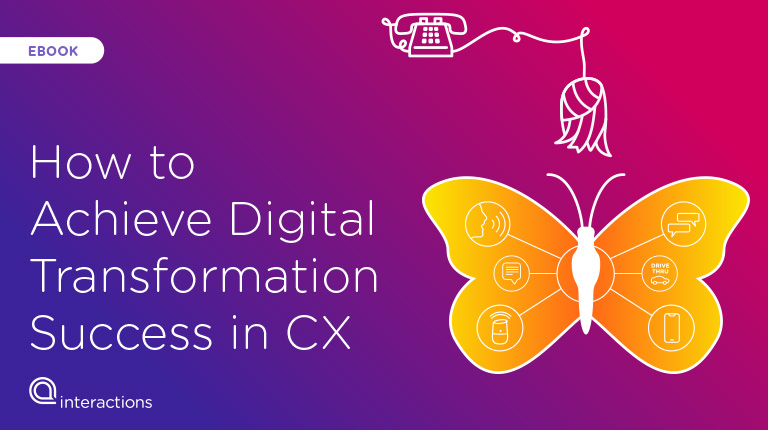First off, let’s start by establishing that digital transformation for customer experience is truly a transformation. It’s not as simple as adding an additional channel such as a chatbot, but more about elevating the entire customer experience. This requires backend integration and process design across all (existing and new) channels and touchpoints to create a seamless and effortless digital experience.
Many businesses are getting caught in the hype of digital transformation, and are looking for quick solutions that will make them appear innovative with their customers. This type of strategy- or lack thereof- is quickly unveiled and often leads to even more frustrating, disjointed experiences.
Like all true transformations, adapting businesses communication to better meet customers where they are requires a focused effort, but will also result in significant ROI- both in customer experience and financially. If you’re ready to take a deep dive, we recommend checking out our eBook on achieving CX success with Digital Transformation.
Why now?
You may be thinking to yourself that people have been using smartphones and websites for what seems like forever. What’s the rush? The truth is, the concept of digital transformation has been around for quite some time, too. And in the past few years, more and more businesses are offering easier ways to communicate with customers. Because customers are now experiencing these better options, the bar has been raised. Companies that don’t follow suit are beginning to be seen as outdated and unable to adapt. Of course, different industries are at different stages of this adoption, but we are quickly reaching a time where all customers expect every business, regardless of industry, to have an effortless customer experience in place.
Why customer experience?
There is a growing consensus that the most important and impactful use cases for advancing digital transformation are in the customer experience space. Statistics support this—more than 60% of digital transformation initiatives and pilots focus on improving customer experience, engagement, and retention. Conversational AI plays a large part in these digital transformation initiatives. Leading industry analyst firms Tractica and IDC both identify automated customer service as the number one use case for AI-enabled digital transformation. It’s no secret to survive among competition, business must focus on a customer-centric approach. Customers are asking for easier, faster, and more efficient ways to get things done. Without answering these requests, businesses are ignoring the arguably most important part of keeping their business alive: their customers.
Where to start?
As mentioned above, digital transformation is not an easy undertaking. There is not a one-size-fits-all solution, or a band-aid that can be used to cover up the problem. It requires a deep evaluation and restructuring across the entire organization. Here are a few items that are imperative across all industries, to achieve a successful digital transformation initiative:
Voice is essential
It’s no question that there is a growing proliferation of smart speakers and intelligent assistants like Alexa, Siri, and Google Assistant. It is estimated that 1-in-6 Americans (16%) own a voice activated smart-speaker, per Edison Research and NPR. Simply put, companies and consumers alike are seeing voice as the easiest way to get things done. This is because using voice is the most natural mode of communication for humans. More customers prefer to talk on the phone or through a smart speaker, with 57% of consumers believing that using voice enables them to resolve issues faster.
It’s easy for companies to see voice as an outdated channel that is not worth an upgrade when it comes to digital transformation. But based on the above numbers and the rapidly growing trend, it’s becoming clear that prioritizing voice can actually have a greater ROI and lead to better customer experiences for customers. You can learn more about making voice a key player in your digital transformation strategy here.
Work as a team
A big mistake in digital transformation is treating a business as siloed departments versus a united organization. Engaging a cross-functional team is crucial to achieving digital transformation success. There should be collaboration across the organization towards a comprehensive corporate digital strategy. For example, if customer experience is a focus, realize the many divisions that affect the customer journey, including those who choose technologies, and involve them all in planning, decision-making, and execution. If each division and department pursues its own strategy, the result will be a disconnected customer journey. If you do not have an executive, such as Chief Digital Officer or Chief Customer Experience, who is driving a cohesive digital transformation across the company, it is important to involve key departments from the beginning.
It’s more than just good technology
Good technology gets you to the starting line, but proper design and business processes are needed to finish the race. When we think of digital, we often think of technology. But your digital strategy needs to have more than just fancy features. It’s important to work across the organization to integrate the technology, update business processes, and ensure a smooth, cohesive journey to create a successful and lasting change.
To learn more strategies for starting a digital transformation initiative in your company, check out our eBook about how to achieve digital transformation success in customer experience.





